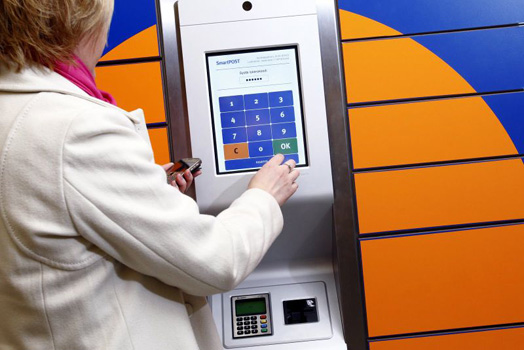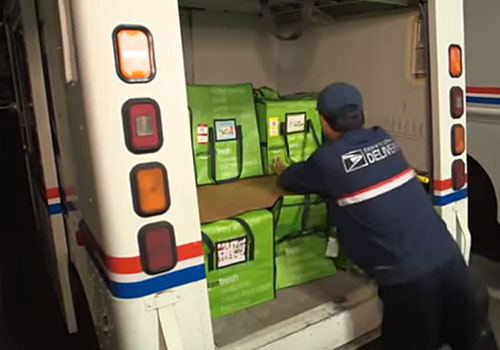
Alternate fuel vehicles for USPS
The U.S. Postal Service has a long history of exploring cleaner, more energy-efficient, and more cost-effective ways to deliver the nation’s mail. And, as such, it has acquired the nation’s largest fleet of alternate-fuel vehicles — some 38,000 cars, trucks and minivans — powered by electricity, compressed natural gas, liquid propane gas, ethanol (E85), biodiesel fuel, and hydrogen fuel cells.
To help promote the development of alternate-fuel technologies as well as to encourage the availability of alternate fuels, the Postal Service participated in a White House event today, demonstrating the technology behind a hydrogen fuel-cell minivan and an electric two-ton truck — both zero-emissions mail-delivery vehicles.
“With 289,000 vehicles driving 1.2 billion miles each year, the Postal Service is in a unique position to help generate demand for alternate fuels as well as to help reshape the nation’s refueling infrastructure,” said Postmaster General and CEO John E. Potter. “And, by working with manufacturers like General Motors and Azure Dynamics to develop alternate-fuel vehicle technologies, we are helping to lead the way to a nation with cleaner air and greater energy security.”
For the past two and a half years, the Postal Service has been collecting and analyzing data from a General Motors HydroGen3 hydrogen fuel-cell minivan, which has been delivering mail in the Washington, D.C.-area three days a week. A second HydroGen3 minivan has been delivering mail in Irvine, Calif., since September 2006. Vehicles powered by hydrogen fuel cells emit just pure water and are twice as energy efficient as vehicles with internal combustion engines.
Since 2004, 30 two-ton zero-emission electric vehicles have been delivering mail in New York City. The CitiVans — manufactured by Workhorse, Union City, Ind., and Solectria Corporation, Lawrence, Mass., (now owned by Azure Dynamics, Woburn, Mass.) — are powered by a series of lead-acid batteries constructed from sealed gel modules. Because the batteries are sealed, they do not require water replacement or other maintenance during their service life. The trucks are recharged via dedicated 220 V electrical outlets at Postal Service facilities.
Postal Service engineers say that both the HydroGen3 minivans and the CitiVans have been holding up well to the rigors of stop-and-go driving and hot and cold weather conditions.
An independent federal agency, the U.S. Postal Service is the only delivery service that visits every address in the nation, 146 million homes and businesses, six days a week. It has 37,000 retail locations and relies on the sale of postage, products and services to pay for operating expenses, not tax dollars. The Postal Service has annual revenues of USD73 billion and delivers more than 46 percent of the world’s mail volume.












